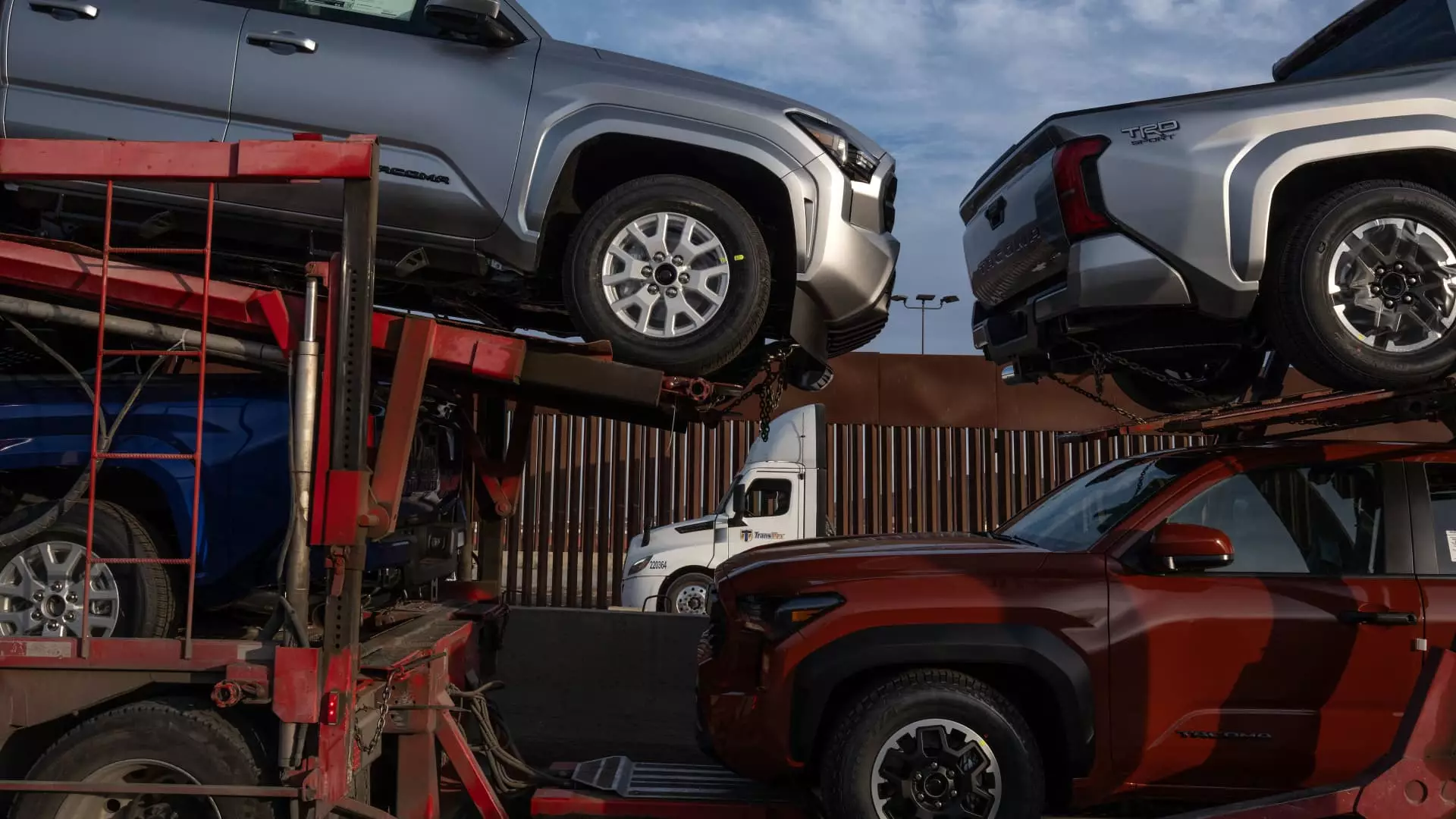As the automotive world braces itself for the possibility of significant tariffs on imports from Canada and Mexico, the stakes have never been higher. President Donald Trump’s administration has hinted at imposing a 25% duty, a move that can ripple through the complex network of manufacturers and suppliers that constitutes the North American automotive ecosystem. This looming threat poses serious ramifications not just for manufacturers but also for consumers who may face inflated vehicle prices.
For months, automotive companies have adopted a cautious wait-and-see stance regarding potential tariffs. This is especially true for major players like General Motors (GM), which dominantly leads the U.S. market. Still, as the date approaches for the potential policy change, automakers express a desperate need for clarity to tailor their operational strategies. Without clear insight into these policies, companies find it increasingly challenging to forecast their leads and manage their supply chains effectively.
Tariffs are effectively a tax on imported goods, meaning that automakers who import parts and vehicles will see increased operational costs. The immediate concern is whether these companies would absorb the cost increase or pass them on to consumers—potentially leading to decreased demand for vehicles. Such uncertainty has already begun to affect market confidence. The performance of GM’s stock experienced notable declines recently, a reaction to the broader investor fears surrounding impending tariffs.
An analysis by Barclays highlights that while GM’s financial opportunities appear strong, navigating U.S. policy uncertainty remains a critical hurdle. Indeed, operational forecasts from GM did not incorporate potential tariffs, reflecting a cautious strategy influenced by an unpredictable trading environment. Both CFO Paul Jacobson and CEO Mary Barra have acknowledged contingency plans, yet pressure mounts as investors remain skittish about the noise in the marketplace and external factors such as climate-related disasters or national political shifts.
The automotive industry’s connectivity across the U.S., Canada, and Mexico is impressive and yet precarious. Most major manufacturers have plants in the U.S. but also rely on crucial imports from Mexico, resulting in a deeply integrated automotive supply chain. Reports indicate that nearly half of all auto parts utilized in the U.S. market are produced in Mexico, and most of these parts are ultimately channeled back into American manufacturing.
This interconnectedness exposes automakers to considerable risk should tariffs come into effect. An estimate by Wells Fargo puts the potential financial impact on traditional Detroit automakers—GM, Ford, and Stellantis—at billions each year. The calculations reflect a gradation of risk based on tariff percentage; for example, a hypothetical 25% tariff on vehicles from Canada and Mexico could add over $6,000 to the cost of an average vehicle, shifting the financial burden directly onto consumers.
Not all manufacturers are equally threatened by the tariff situation. Analysis by S&P Global Mobility points out varying levels of exposure, particularly among foreign automakers whose supply chains are deeply rooted in the region. Volkswagen, for instance, appears most at risk with 43% of its U.S. sales produced in Mexico, followed closely by Nissan and Stellantis. This disparity demonstrates that strategic planning for potential tariffs will differ widely across manufacturers as each assesses their unique operational landscapes and market exposure.
Antonio Filosa, the head of Stellantis North American operations, articulated a common sentiment when he noted that the company is working on response scenarios depending on the administration’s decisions. Such proactive measures highlight a critical need for automakers to stay vigilant and adaptable amidst the chaos of U.S. trade policies.
As Donald Trump’s administration prepares to reveal its stance on tariffs, the automotive sector finds itself at a fork in the road. With millions of vehicles produced each year heavily relying on a cross-border supply chain, the consequences of such tariffs could be far-reaching. The industry’s response highlights a landscape filled with uncertainty, with manufacturers keenly aware that the policies established today will dictate their business strategies and consumer prices for years to come.
In this complex environment, it is evident that adaptive strategies, contingency plans, and a vigilant eye on policy changes will be paramount for automakers hoping to thrive. Whether tariffs become a reality or fade into political rhetoric, the impact on the automotive industry will continue to demand careful navigation as major players prepare for all possible outcomes.

